Athens › Atlantis › The Evolution of Buddhist Schools » Origins and History
Athens › Atlantis › The Evolution of Buddhist Schools » Origins and History
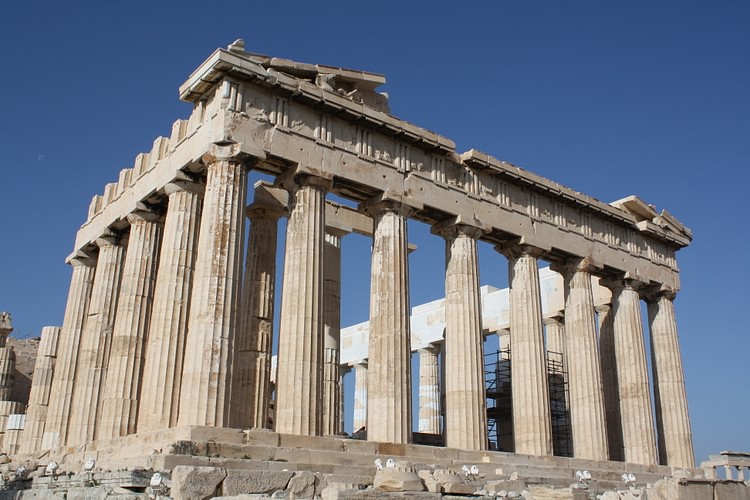
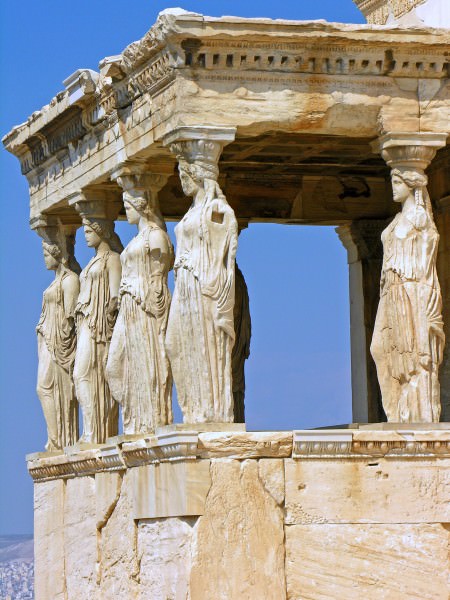
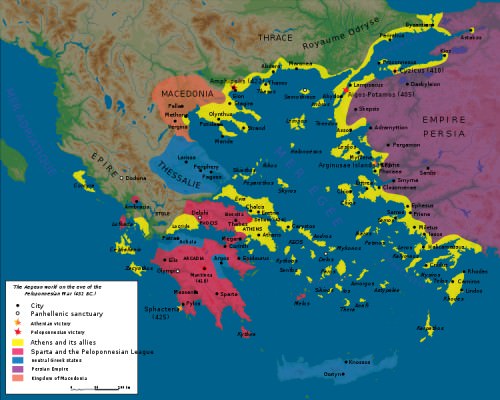
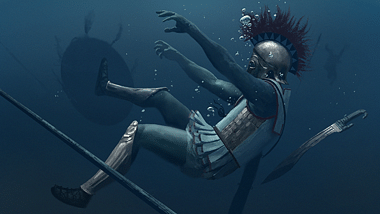
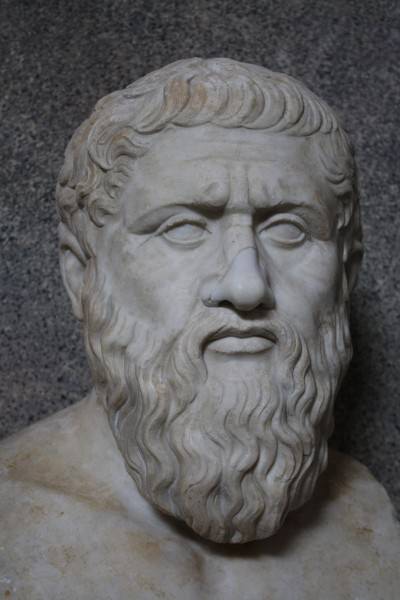

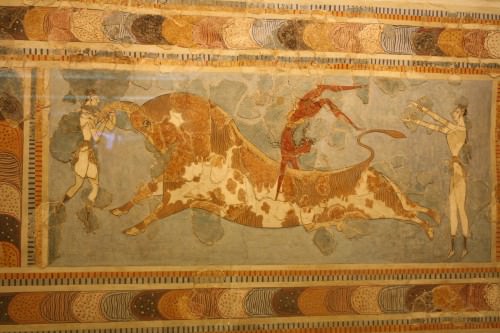
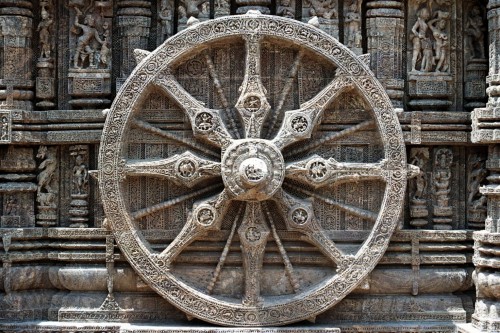

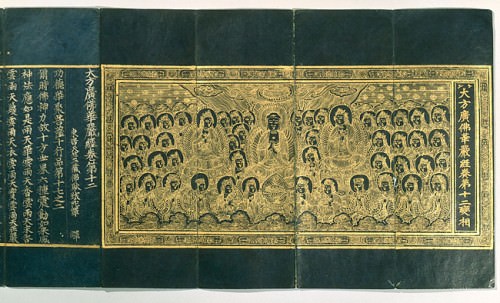

with permission from the Website Ancient History Encyclopedia
Content is available under License Creative Commons: Attribution-NonCommercial-ShareAlike 3.0 Unported. CC-BY-NC-SA License
Articles and Definitions › Contents
- Athens › Who Was
- Atlantis › Origins
- The Evolution of Buddhist Schools › Origins
Ancient civilizations › Historical places, and their characters
Athens › Who Was
Definition and Origins

The city of Athens, Greece, with its famous Acropolis, has come to symbolize the whole of the country in the popular imagination, and not without cause. Athens began as a small, Mycenaen community and grew to become a city that, at its height, epitomized the best of Greek virtues and enjoyed such prestige that the Spartans refused to sack the city or enslave the citizens, even after Athens' defeat in the Peloponnesian War. This set a model that would be followed by future conquerors who would defeat Athens but not destroy it.
EARLY SETTLEMENT
Evidence of human habitation on the Acropolis and, below, in the area around the Agora, dates back clearly as far as 5000 BCE and, probably, as early as 7000 BCE. According to legend, the Athenian King Cecrops named the city after himself but the gods, seeing how beautiful it was, felt it deserved an immortal name. A contest was held among the gods on the Acropolis, with Cecrops and the citizenry looking on, to determine which deity would win the honor. Poseidon struck a rock with his trident and, as water gushed forth, he assured the people that now they would never suffer drought. Athena was next in line and dropped a seed into the earth which sprouted swiftly as an olive tree. The people thought the olive tree more valuable than the water (as, according to some versions of the story, the water was salty, as was Poseidon's realm) and Athena was chosen as patron and the city named for her.
UNDER PERICLES, ATHENS ENTERED HER GOLDEN AGE AND GREAT THINKERS, WRITERS, AND ARTISTS FLOURISHED IN THE CITY
As the soil was not conducive to large-scale agricultural programs, Athens turned to trade for its livelihood and, mainly, to sea trade. The early Mycenaean period (c. 1550 - 1100 BCE) saw massive fortresses rise all over Greece, and Athens was no exception. The remains of a Mycenaean palace can still be seen today on the Acropolis. Homer 's Iliad and Odyssey portray the Mycenaeans as great warriors and seafaring people, and there is no doubt they traded widely throughout the Aegean and Mediterranean region. In c. 1200 BCE the Sea Peoples invaded the Greek archipelago of the Aegean from the south while, simultaneously, the Dorians came down from the north into mainland Greece. While the Sea Peoples made definite incursions into Attica (the mainland region surrounding Athens) the Dorians by-passed the city, allowing the Mycenaean culture to survive (although, like the rest of Greece, there seems to have been an economic and cultural downturn following these invasions).The Athenians, afterward, claimed for themselves a special status in that they spoke Ionian, instead of Doric, Greek and held to customs they felt were superior to their neighbors.

Caryatids of the Erechtheion
ATHENIAN GOVERNMENT & LAWS
The wealthy aristocrats held control of both the land and the government and, in time, poorer land owners became enslaved (or nearly so) through debt to the more wealthy. Further, there was a perceived lack of consistency among the other laws of the city. The first series of laws written to address these problems were provided by the statesman Draco (also known as Dracon/Drakon) in c. 621 BCE but were considered too severe (the penalty for most infractions was death), and so the great lawgiver Solon was called upon to modify and revise them. Solon, though an aristocrat himself, created a series of laws which equalized the political power of the citizenry and, in so doing, laid the groundwork for democracy in Athens in 594 BCE. After Solon resigned from public office various factional leaders sought to seize power and the ultimate victor, Peisistratos, recognized the value of Solon's revisions and kept them, in a modified form, throughout his reign as a benevolent tyrant. His son, Hippias, continued his policies until his younger brother, Hipparkhos, was assassinated over a love affair in 514 BCE.After this Hippias instituted a reign of terror which finally culminated in the overthrow of the Peisistratid tyranny in the Athenian Revolt of 510 BCE (backed by Sparta and lead by the Spartan Kleomenes). In the aftermath of the coup, and after settling affairs with Spartan factions such as Isagoras's bid for power, Cleisthenes was appointed to reform the government and the laws and, in 507 BCE, he instituted a new form of government which today is recognized as Democracy. According to the historian Waterfield, "The pride that followed from widespread involvement in public life gave Athenians the energy to develop their city both internally and in relation to their neighbors". This new form of government would provide the stability necessary to make Athens the cultural and intellectual center of the ancient world; a reputation which lasts even into the modern age.
After the Athenians (with the help of Plataeans) defeated the Persians at the Battle of Marathon in 490 BCE and, again, after driving off a second Persian invasion at Salamis in 480 BCE (and soundly defeating the Persians at Plataea and Mycale in 479 BCE), Athens emerged as the supreme naval power in Greece. They formed the Delian League, ostensibly to create a cohesive Greek network among city-states to ward off further Persian attacks, and, under the leadership of Pericles, grew so powerful that the Athenian Empire could effectively dictate the laws, customs, and trade of all her neighbors in Attica and the islands of the Aegean. The historian Waterfield writes:
There is no little irony in the fact that one of the things we most admire in the ancient Greeks is their love of freedom - and yet one of the chief manifestations of that love was their constant striving to control in some way the futures of their neighbors.
THE GOLDEN AGE
Even so, under Pericles, Athens entered her golden age and great thinkers, writers, and artists flourished in the city.Herodotus, the `father of history', lived and wrote in Athens. Socrates, the `father of philosophy ', taught in the marketplace. Hippocrates, `the father of medicine', practiced there. The sculptor Phidias created his great works for the Parthenon on the Acropolis and the Temple of Zeus at Olympia. Democritus envisioned an atomic universe. Aeschylus, Euripedes, Aristophanes, and Sophocles wrote their famous plays and Pindar his Odes. This legacy would continue as, later, Plato would found his Academy outside the walls of Athens in 385 BCE and, later, Aristotle 's Lyceum would be founded in the city centre.

Peloponnesian War
The might of the Athenian Empire encouraged an arrogance in the policy makers of the day which grew intolerable to her neighbors. When Athens sent troops to help Sparta put down a Helot rebellion, the Spartans refused the gesture and sent the Athenian force back home in dishonor, thus provoking the war which had long been brewing. Later, when Athens sent their fleet to help defend its ally Cocyra ( Corfu ) against a Corinthian invasion during the Battle of Sybota in 433 BCE, their action was interpreted by Sparta as aggression instead of assistance, as Corinth was an ally of Sparta.
The Peloponnesian War (431-404 BCE) between Athens and Sparta (though involving, directly or indirectly, all of Greece) ended in disaster for Athens after her defeat. Her empire and her wealth gone, her walls destroyed, only her reputation as a great seat of learning and culture prevented the sack of the city and the enslavement of the populace. Athens struggled to throw off her condition as a subject state, and with some success, until they were defeated in 338 BCE by the Macedonian forces under Philip II at Chaeronea. Athens was then subject to Macedonian rule until their defeat by the Romans in 197 BCE at the Battle of Cynocephalae after which Greece was methodically conquered by the Roman Empire. It is a tribute to an enduring legacy that the Roman general Sulla, who sacked Athens in 87-86 BCE, slaughtered the citizenry, and burned the port of Piraeus, refused to allow his soldiers to burn the city itself. In the modern age the name of Athens still conjures to the mind words and images of the classical world and the heights of intellectual and poetic creativity, while the Parthenon on the Acropolis continues to symbolize the golden age of ancient Greece.
Atlantis › Origins
Definition and Origins

Atlantis is a legendary city which is described in the work of the Greek philosopher Plato (c. 429 – 347 BCE). The story of Atlantis with its fabulously wealthy and advanced civilization which was swept into the sea to be lost for ever has captured the imagination of readers for over two millennia. Without any archaeological evidence or substantial information from sources besides Plato, the legend poses more questions than answers. Was there a real Atlantis? Was the story based on the ancient Minoan civilization ? Was the disaster that swept away the city the eruption of Thera on Santorini in the Aegean, or was the whole story a fiction of Plato's to illustrate the glory of his own city of Athens and provide a moral example of what happened to cities who became greedy and neglected the rule of law? If it had been a real state then who founded it? Why do we know so little about it? Where is it now? These are all questions endlessly speculated by scholars and history enthusiasts without any satisfactory answers ever being reached.
PLATO'S TIMAEUS
The story of Atlantis first appears in Plato's Timaeus, one of his later works. The dialogue's title derives from its protagonist, a fictional Pythagorean philosopher from Southern Italy who discusses the soul with Socrates. This particular dialogue is not a philosophical one, though, but rather an exercise in sophistry and involves an extremely long monologue by Timaeus on the creation of the world. Philosophical ideas are discussed but the age-old question arises of what exactly are Plato's ideas and which are merely those of his characters? The passage on Atlantis is actually spoken early in the dialogue by Critias, a Sophist who lived c. 460 to 403 BCE. Significantly, Critias, like all Sophists (as Plato himself explained in his Phaedrusdialogue), presents his ideas with exaggeration and embellishments to capture the attention of the listener and convey the essence of the ideas only. All is opaque, nothing is exact. Whatever literary means necessary must be taken to express complex philosophical ideas and make them more understandable. It is, perhaps, with this in mind, that one should read the Atlantis myth.
PLATO USES WHATEVER LITERARY MEANS NECESSARY TO BEST EXPRESS HIS PHILOSOPHICAL IDEAS. IT IS, PERHAPS, WITH THIS IN MIND, THAT ONE SHOULD READ THE ATLANTIS MYTH.
Critias' story is introduced by another guest Hermocrates (a historical general from Syracuse ) who urges Critias to tell his story "that goes back a long way" (20d). Critias begins by emphasising his story is true and was vouched for by Solon, the Greek statesman and poet who lived c. 640 - c. 560 BCE. Critias acknowledges his story is "a very strange one, but even so, every word of it is true" (20d). He says that Solon told it to his friend Dropides, Critias' great-grandfather, and it was passed on down the family generations. Solon, we are told, heard the story on his travels in Egypt, specifically by priestly scholars at Sais, and had meant to put it in writing but never found the opportunity. Critias would like to tell the story because it illustrates one of Athens' greatest ever achievements but has, unfortunately, been forgotten over time due to its great antiquity, according to the Egyptian priests, 9,000 years before Plato.
The great achievement of this ancient Athens is described by Critias as he quotes the priest speaking directly to Solon:
The records speak of a vast power that your city once brought to a halt in its insolent march against the whole of Europe and Asia at once - a power that sprang forth from beyond, from the Atlantic Ocean. For at that time this ocean was passable, since it had an island in it in the front of the strait that you people say you call the 'Pillars of Hercules.' [Strait of Gibraltar] This island was larger than Libya and Asia [for the Greeks at that time Asia was the Nile to the Hellespont] combined, and it provided passage to the other islands for people who travelled in those days. From those islands one could then travel to the entire continent on the other side, which surrounds that real sea beyond. Everything here inside the strait we're talking about seems nothing but a harbour with a narrow entrance, whereas that really is an ocean out there and the land that embraces it all the way around truly deserves to be called a continent. Now on this Isle of Atlantis a great and marvellous royal power established itself, and ruled not the whole island, but many of the other islands and parts of the continent as well. What's more, their rule extended even inside the strait, over Libya as far as Egypt, and over Europe as far as Tyrrhenia [central Italy]. Now one day this power gathered all of itself together, and set out to enslave all of the territory inside the strait, including your region and ours, in one fell swoop. Then it was, Solon, that your city's might shone bright with excellence and strength, for all humankind to see. Preeminent among all others in the nobility of her spirit and in her use of all the arts of war she first rose to the leadership of the Greek cause. Later, forced to stand alone, deserted by her allies, she reached a point of extreme peril. Nevertheless, she overcame the invaders and erected her monument of victory. She prevented the enslavement of those not yet enslaved, and generously freed all the rest of us who lived within the boundaries of Hercules. Sometime later excessively violent earthquakes and floods occurred, and after the onset of an unbearable day and a night, your entire warrior force sank below the earth all at once, and the Isle of Atlantis likewise sank below the sea and disappeared. That is how the ocean in that region has come to be even now unnavigable and unexplorable, obstructed as it is by a layer of mud at a shallow depth. The residue of the island as it settled. ( Timaeus, 24e-25e, transl. DJZeyl)
Critias then explains that the previous day's discussion with Socrates (presumably the Republic ) and talk of an ideal city and the political institutions proposed by the great philosopher had reminded him of the story. He then proposes to use the story as a basis of that day's discussion. Socrates agrees as it is just then the celebration of Athens' patron goddess Athena and, further, "it's no made-up story but a true account" (26e), says Socrates. In fact, though, Atlantis is not mentioned again and Timaeus proceeds to give a long speech on the origin of the universe and humanity. None of the other characters speak again.

Plato
PLATO'S CRITIAS
The Atlantis story crops up again, this time in more detail, in Plato's Critias, the dialogue named after our story-telling Sophist of the Timaeus. This work follows on from the conversation of Timaeus, and now Critias will present the theories of Socrates' ideal state in the context of a real city, that of Athens 9,000 years ago. He will thus show how these institutions allowed the Athenians to defeat a technologically advanced civilization from Atlantis and prosper thereafter. The dialogue is incomplete as Critias' speech does not go as far as the war between Athens and Atlantis and trails off mid-story, and the fourth character, Hermocrates, does not get his turn to speak, despite Socrates indicating at the beginning that he would.
Critias begins his speech thus,
We should recall at the very beginning that, in very rough terms, it was some 9,000 years since the time when a war is recorded as having broken out between the peoples dwelling outside the pillars of Hercules and all those dwelling within. This war I must now describe. Now they said that this city of Athens was the ruler of the [Mediterranean] peoples and fought for the duration of the entire war. They said, too, that the kings of the island of Atlantis were the rulers of the other peoples. This island, as we were saying [in Timaeus ], was at one time greater than both Libya and Asia combined. But now because of earthquakes it has subsided into the great Ocean and has produced a vast sea of mud that blocks the passage of mariners who would sail into the great Ocean from Greek waters and for this reason it is no longer navigable. ( Critias, 108e-109a, transl. D.Clay)
Atlantis reappears a few pages after a description of how the gods Athena and Hephaistos were given Athens to govern, the early life of that city and her ancient kings:
So it was that Poseidon received as one of his domains the island of Atlantis and he established dwelling places for the children he had fathered of a mortal woman in a certain place on the island I shall describe. ( ibid 113c)
There then follows a lengthy and detailed description of Atlantis. The island was mountainous and rose straight from the sea. It had fertile central plains with a central hill surrounded by rings of sea and land which were created by Poseidon to protect his people. We are told that the first king was Atlas and so the land called Atlantis and the ocean around it the Atlantic. The race prospered over many generations and they conquered the lands around the Mediterranean.
The land of Atlantis produced trees, metals, abundant food, and was inhabited by many creatures, including elephants. The people of Atlantis lived well, they domesticated animals, irrigated their crops, cities were built with harbours and fine temples, bridges and canals with walls and gates were constructed to join the rings of sea around the island. These latter were then decorated with bronze and tin such was the abundance of resources. At the centre of the city was a temple to Poseidon which was faced with silver in its entirety and given a roof of ivory. The whole complex was then surrounded by a wall of pure goldand decorated with golden statues. The city had fountains of hot and cold water, bath houses, gymnasia, a horse racing track, and a huge fleet of warships. The population was enormous and the army could field a force of 10,000 chariots. Religious practices are then described and these involve the chasing and sacrifice of bulls.
Quite simply this race on Atlantis was the most populous, technologically advanced, powerful and prosperous ever seen. Yet their decline would be swift and dramatic:
Yet inwardly they were filled with an unjust lust for possessions and power. But as Zeus, god of the gods, reigning as king according to law, could clearly see this state of affairs, he observed this noble race lying in this abject state and resolved to punish them and to make them more careful and harmonious as a result of their chastisement. To this end he called all the gods to their most honoured abode, which stands at the middle of the universe and looks down upon all that has a share in generation. And when he had gathered them together he said… ( ibid, 121b-c)
And there the story is interrupted and the Critias text ends. We know, though, from the previous references earlier in the Critiasand in the Timaeus that Atlantis was defeated by the Athenians in a war and Atlantis was swept into the sea by earthquakes and floods never to be seen again.

Volcanic Crater of Thera (Santorini)
INTERPRETATION OF ATLANTIS
Plato, then, at least at face value, introduces the story of Atlantis only to show that ancient Athens was a great city and its people with their rule of law were able to defend their liberty against an aggressive foreign power. That, at least, is the intention of Critias, the character. There is certainly a moral side to the story too, that greed for wealth and power will only bring destruction.
As a metaphor, the Atlantis story and Athens' victory may represent the Battle of Marathon in 490 BCE when the Greeks had famously defeated the invading Persian army of Darius. The metaphor of Greeks fighting 'barbarians' represented as mythical creatures such as centaurs was already evident in Greek art prior to Plato. Does the 'forced to stand alone' reference the absence of the Spartans at Marathon perhaps?
And what of the physical location of Atlantis? Many consider the island and its disappearance inspired by the volcanic eruption, earthquakes, and consequent tsunamis on the Aegean island of Thera in the late Bronze Age which destroyed that particular culture and sank most of the island. Thera with its extensive trade network and fine arts would surely have been considered advanced and prosperous by contemporary civilizations. What better way to remember this shocking extinction than by a colourful myth? The sheer mountains description of Atlantis would certainly fit that of a volcanic island but its size and location in the Atlantic do not fit with Thera.
Then there is the mention of chasing and sacrificing bulls in Atlantis. Could this reference the well-documented practice on Minoan Crete where bull jumping, worship, and iconography pervade the archaeological record? Plato's next dialogue, according to many scholars, was (coincidentally?) titled Minos after the island's legendary king, admired by Plato for his law-making skills.

Minoan Bull Leaping
LATER AUTHORS
Other ancient authors after Plato were interested in the tale of Atlantis starting with Crantor (c. 335 -275 BCE). He was a philosopher in Plato's Academy who wrote a celebrated commentary on the Timaeus and held the Atlantis story to be literally true. Atlantis reappears in the work of the Greek biographer Plutarch (c. 45 – c. 125 CE) who reiterates in his biography of Solon that the famous law-giver had wanted to document the story for posterity:
Solon also attempted to write a long poem dealing with the story or legend of the lost Atlantis, because of the subject, according to what he had heard from the learned men of Sais in Egypt, had a special connection with Athens. He finally abandoned it, however, not, as Plato suggests, for lack of time, but rather because of his age and his fear that the task would be too much for him. ( Solon, 75)
And so it goes on over the centuries, through the Renaissance and Francis Bacon's New Atlantis, Thomas More's Utopia, and right up to the present day with countless retellings and embellishments, and theories ranging from the plausible to the ridiculous, posed, debated, rejected, and debated again.
The tale of Atlantis leaves many questions which have only tantalizing hypotheses as answers. Perhaps, then, we would do well to remember that Plato was not a historian but a philosopher, that he frequently used similes and metaphors to express his thoughts, and that, in his own words, delivered from the mouth of Critias: "It is inevitable, I suppose, that everything we have all said is a kind of representation and attempted likeness" ( Critias 107b).
The Evolution of Buddhist Schools › Origins
Ancient Civilizations
All Buddhist schools today despite their differences in ritual, doctrine, and practice are based on the original teachings of the Buddha Shakyamuni, Prince Siddhartha Gautama, who became enlightened at approximately the age of 35 whilst sitting under the Bodhi tree in Bodhgaya, northern India, about 2600 years ago. 'Enlightenment' is the most common translation of the Sanskrit term ' bodhi,' in Japanese ' satori ' or ' kensho,' which means awakening and should not be confused with the western idea of intellectual enlightenment which means 'informed, aware, knowledgeable, illuminated' and so on. In Buddhism, enlightenment is the state that marks the culmination of the Buddhist religious path as established by Buddha Shakyamuni.
The release from human suffering and continual rebirths, known in Indian religions as the world of ' samsara,' is Nirvana (Skt: moksha or mukti ; Pali: Nirbanna ) which literally means the 'blowing out' or 'extinguishing' of all human cravings. This is recognised as a state of perfect quietude, freedom, and the highest form of happiness which all humans are seeking. But in Buddhism, this liberation refers to a realisation of non-self (Skt: anatta ) and emptiness (Skt: shunyata ) which bring an escape from samsara.
THE WHEEL OF DHARMA
To fully understand the diversity of Buddhist schools, it is important to recognise the Dharmachakra (Skt: wheel of the law with eight spokes) which represents the Eightfold Path (Right View, Right Resolve, Right Speech, Right Actions, Right Occupation, Right Effort, Right Mindfulness, and Right Concentration). This wheel turns eternally with no beginning or end and is significant because it was the theme of the very first sermon Buddha gave, 'Setting in Motion of Wheel of Law' ( Dharmacakrap ravartanaSutra ) in which he sets out the Four Noble Truths (first: suffering is inevitable in human life; second: suffering arises due to attachment; third: suffering ceases with the attainment of Nirvana; fourth: the Eightfold Path described above). At this time, Buddha predicted two more turnings of the Wheel of Dharma to suit the condition of humans as time went by. The second would be Mahayana Buddhism and the third Vajrayana Buddhism.

Dharma Wheel
THE THREE TURNINGS OF THE WHEEL
The first turning of the wheel was Thervada. This is the oldest and most orthodox of the Buddhist schools and is known also as the 'Teaching of the Elders or Hearers' (Skt: Hinayana or Sthavira school). Originating in Sri Lanka, it is characterized by a strong division between monks and lay practitioners: the monks meditate, study, and teach, working for individual enlightenment, while the laity follows the basic five precepts (refraining from harming living beings, from stealing, from sexual misconduct, from lying/gossip, and from intoxication, eg drugs/drinks), gives alms, makes donations, chants and offers prayers.
In summary, these teachings are plain and guide aspirants to abstain from evil, accumulate good, and purify the mind. They focus on the human Buddha and the Three Trainings: ethical conduct, meditation, and insight wisdom. The key figure in Theravada Buddhism is Buddhaghosa, and the key text is Visuddhimagga ('The Path of Purification'). The ideal of this individual path is the arhat or worthy person, but this may take several lifetimes to achieve.
Theravada practitioners aim for a life in which all birth is at an end, holy life is fully achieved, where all that has to be done has been done, and there is no more returning to worldly life. The texts of this Early Period, written in Pali which is thought to be the spoken language of the Buddha, are called Pali Canon, although Thervadans acknowledge all sutras from the following wheel-turnings also. Its limitations may be said to be that the figure of the Buddha is remote to practitioners, that it may take several lifetimes to become an arhat and women are, even today, thought of as inferior.
The second turning of the wheel was Mahayana, known also as the Mahayanas, (the 'Great Vehicle' or 'Truth') a movement of diverse teachings systematised by Nagarjuna c. 2nd century CE. It follows the basic Theravada structure, but the demarcation between the monks and lay practitioners is blurred because all beings can become equally enlightened. The body of Mahayana sutras, the Wisdom Sutras, has seen many cultural adaptations due to the spread of Buddhism to the north to Nepal and Tibet and east to northern and southern Asia. Stupas, depositories for relics of Holy Beings and sacred texts, appeared, maintained and patronised by lay practitioners; and ideal became the Bodhisattva, a being who served all humanity and put their own enlightenment aside. The figure of the Buddha became supernatural with many aspects or emanations. All beings can reach Nirvana within their lifetime through meditation, rituals, and chanting because all beings contain the seed of Buddhahood, Buddha Nature.

Sanchi Stupa
Mahayana Buddhists work towards the salvation of all who sincerely seek enlightenment, monks and laity alike, therefore, compassion and wisdom are towering values and the Bodhisattva ideal dominates all practice. Its limitations may be said to be that enlightenment is often perceived as a goal rather than a step in a much larger process and rituals and practice are so elaborate that the life of suffering may easily be forgotten and practitioners instead become attached to life.
The third turning of the wheel was Vajrayana ('Diamond Vehicle'), an extension of the Mahayana Buddhism, also known also as Tantric or Esoteric Buddhism, which came into existence circa 700 CE. Vajra is a thunderbolt used the symbolise the imperishable nature of enlightenment. Tibet has always been isolated with its mountainous terrain, few natural resources and tiny population, but there were three diffusions of Buddhism: first, at the hand of Songsten Gampo, the first religious king who had an Indian and Chinese wife who were acquainted with Buddhism; the second, King Trisong Detsen who invited Santaraksita from India to promulgate the teachings, succeeded by Padmasambhava, a powerful guru who established the first monastery; and the third, King Relpa Chen was assassinated and succeeded by Lang Darma, but quickly followed by the great Atisha (982-1054), an Indian teacher, who perfected the Buddhist system in Tibet.
VAJRAYANA BUDDHISTS ASPIRE TO BECOME BODHISATTVAS, TAKING THEIR INNATE BUDDHA NATURE AS THE STARTING POINT.
In the 20th century CE, Tibet was invaded by China, leading to the political and spiritual leader, the Dalai Lama, fleeing to India. Over 6,000 monasteries in Tibet were destroyed. Since then Tibetan Buddhism has become an international practice led by Tibetan gurus resident in UK, US, and many parts of Europe.
Vajrayana Buddhists aspire to become Bodhisattvas, taking their innate Buddha Nature as the starting point. Employing tantric techniques, the practitioner works to attain the empty nature of the enlightened mind and to purify all perceptions so that they can see the ultimate truth. Its limitations are that Vajrayana Buddhists can be boastful and competitive and the four main schools constantly fight for supremacy. This school also tends to value myth more highly than history and the rituals are complex because of the inherited indigenous practices of Tibet (Bon and other superstitious beliefs).
THE FIRST RIFTS
After the Buddha's death, his disciples worked hard to disseminate his teachings. In 480 BCE, the First Council meeting was held led by Mahakassyapa, Ananda, and Upali, those disciples closest to the Buddha. As a result, the teachings of Buddha were then codified and later recorded in writings known as the sutras. The Second Council was held in 350 BCE mainly to stamp out heresy which was growing among the followers. Due to unrest, this is when the first major rift appeared in the sangha (the community of monks) led by Mahadeva who protested against the arrogance of the elite, in other words, the enlightened, who still had many shortcomings but had become complacent. This is when the first and second turnings of the wheel of Dharma can be traced back to.
TWO IMPORTANT MAHAYANA SCHOOLS
Madhyamaka, or the Middle School, was founded by the first great name in Buddhism, Nagarjuna c. 2nd century BCE, about whom little is known. This school, which claimed to be faithful in spirit to the original teachings of the Buddha Shakyamuni, advocated the Middle Way between extreme practices and theories, for example, either that 'things exist' or 'things do not exist,' believing the essence of the Dharma lay in between the extremes. Debate was popular then, so the strategy of attacking the opposite views rather than defending their own was adopted. Through this intellectual process, reality became like a film strip, each independent frame constantly giving way to the next producing the illusion of stability and continuity. Their conclusion was that the true nature of phenomena can only be described as emptiness which is synonymous with the doctrine of Dependent Origination (Skt: Pratityasamutpada) – all phenomena arise because they depend on causes and conditions and therefore lack intrinsic being, ie when A exists, B arises. If A does not exist, B does not arise. This reasoning is set out in the root text of this school, Mulamadhyamakakarika.
The important implication for the future of Buddhism was that if emptiness is the true nature of everything that exists, there is no difference between samsara and Nirvana and any difference that is perceived must come from ignorance or misconception.Therefore, Madhyamaka suggests there are two levels of truth: the Ultimate Truth (the view of the enlightened); and the Relative or Veiled level of Truth (the view of the unenlightened).
After Nagarjuna, his disciple Aryadeva continued to develop the school. But later there was a division in this school leading to two branches of Madhyamaka: the Svatantrika and the Prasangika. These systems were transmitted from India to Tibet and East Asia. In China, it was known as San-lun (the three treatises school), but due to its negative doctrines, it was heavily criticised by Buddhists and non-Buddhists and eventually converged with the Yogacara School.
The Yogacara School (or Yogachara), which practised yoga, emerged in the 4th century CE. This school is also known as Vijnanavada or the 'Way of Consciousness.' Its origins are shrouded in mystery, and its founders were Maitrayanatha, Asanga, and Vasubandhu. It flourished in India until the 8th century CE when it combined with the best elements of the Madhyamaka. It was transmitted to China through the efforts of Paramartha and Hsuan-tsang and was also introduced and widely studied in Tibet.

Avatamsaka Sutra Frontispiece
The key scriptures are the Sandhinirmocana Sutra, Dasabhumika Sutra and the Avatamsaka Sutra. Many Buddhist classics are attributed to this period, but the encyclopaedic Yogacarabhumi S astra is perhaps the best known attributed to the three founders. Its doctrines and theories are derived from meditational experiences and focus on two themes: the nature of the mind and the nature of experience. Eight aspects of consciousness were distinguished: the afflicted mind, the six perceptual consciousnesses of eye, ear, nose, tongue, body, and thought; deluded awareness a result of self-grasping; and the all-encompassing foundation consciousness, the result of memory. Rebirth in samsara leaves a string of imprints derived from experiences and actions which will eventually ripen when the conditions are right to produce dualistic delusions of subject and object. This gives rise to the production of a false self and the potential production of more imprints. There are three natures: the imagined, the dependent, and the consummate. At enlightenment, a radical transformation occurs creating a mirror-like Awareness.
Yogacara also contributed to a refining of the Three Bodies ( trikaya ), the Five Awarenesses and brought to prominence the ten stages of Bodhi, that of a Bodhisattva being the most important.
FIVE SCHOOLS POPULAR IN THE WEST
Pure Land Buddhism. There are Pure Land Schools in both China and Japan. It comes from the term Buddha-land or Buddha-field, a Mahayana term describing the idea that when beings become enlightened they do not disappear but remain to help others. Each of the five Buddhas, the Five Dhyani Buddhas, was assigned a different colour, wisdom, and realm in early 19th century CE, as follows: white Buddha Vairochana in the centre; green Amoghasiddhi in the north; red Amitabha in the west; yellow Ratnasambhava in the south, and blue Akshobya in the east. In Esoteric Buddhism, these areas of the Cosmos were charted on sacred s known as mandalas, but although outside samsara, the human world, they were not to be confused with the idea of heaven. These practices have become very popular in the west.
Zen. The Chinese word ' Ch'an ' means meditation and is pronounced ' Zen ' in Japanese. Zen is comprised of a number of particular religious techniques and is an umbrella term for various schools of Zen in Japan: Rinzai, Soto, Obaku, and Fuke.Zen is also used to cover the whole tradition of Ch'an in China and other countries such as Vietnam and Korea. Its main practice is seated meditation ( zazen) ' and koans or riddles, brief stories or dialogues from the Ch'an tradition, which are used as the main focus of meditation. Zen is famous for austerity and aggressive teaching techniques, including shouting and beating, which shock practitioners into awakening.
Tendai. One of the major schools of Japanese Buddhism that appeared between 794-1185 CE. It was founded by the monk Saicho who brought the Chinese teachings of T'ien-t'ai to Japan and is widely eclectic embracing both Esoteric rituals, Exoteric studies in doctrine and scripture, and early forms of Zen and Pure Land. Unlike Shingon Buddhism established by Kukai at the same time, Tendai was patronised by the imperial family and became wealthy. This made it a breeding ground for new reform movements such as Zen, Pure Land, Nichiren and combined with corruption and military conflicts caused it to recede into the background. It was eclipsed by the newer schools and today is a minor sect.
Nichren-shu. Nichiren (1222-1282 CE) was the first non-aristocratic leader of a Japanese Buddhist sect which may account for his uncompromising style of religion. Ordained as a Tendai priest which championed the Lotus Sutra, the penultimate teachings of Buddha Shakyamuni, he is famous for promoting his views and openly attacking the teachings of other schools which were considered intolerant and arrogant. As a result of this behaviour, he was exiled to remote islands several times and heavily persecuted. According to him, the Daimoku mantra - ' Namo myoho renge kyo ' - was the sole chant and only practice.There have been many divisions in this sect, and in 1937 CE, one of the most successful and controversial, Soka Gakkai International, has evolved into the third largest political party in Japan, blending politics and religion together.

Nichiren
The Order of Interbeing. Thich Nhat Hanh, the international Vietnamese peace activist established this international order in 1966 CE. It is a mixed lay and monastic group which now has its headquarters in Plum Village, the Dordogne region of southern France. Hanh also established the Unified Buddhist Churches of France and Vietnam and coined the term 'Engaged Buddhism,' meaning Buddhism in action in a society promoting the non-violent solutions to conflict of the individual. He has published over 100 books, 40 of which are written originally in English. This term was inspired by a 13th-century CE king of Vietnam who abdicated his throne to become a monk and founded the School of the Bamboo Forest tradition. In 1960, Hanh was exiled from Vietnam at the outbreak of the Vietnam War, going to study comparative religions at Princeton, and eventually returned to Vietnam in 1963 to aid his fellow practitioners in non-violent peace efforts. His approach combines traditional Zen teachings with insights from other Mahayana and Theravada traditions, offering modern meditation techniques and strategies.
SECULAR BUDDHISM
Today, in the 21st century CE, Secular Buddhism, which focuses on Buddhism as an applied philosophy rather than a religion, is gaining ground. This is based on humanistic values rather than religious. It looks closely at how we see the world as individuals and how to change that view.
The secret of Buddhism is to remove all ideas, all concepts, in order for the truth to have a chance to penetrate, to reveal itself.Thich Nhat Hahn - Buddha Mind, Buddha Body: Walking Toward Enlightenment
LICENSE
Article based on information obtained from these sources:with permission from the Website Ancient History Encyclopedia
Content is available under License Creative Commons: Attribution-NonCommercial-ShareAlike 3.0 Unported. CC-BY-NC-SA License